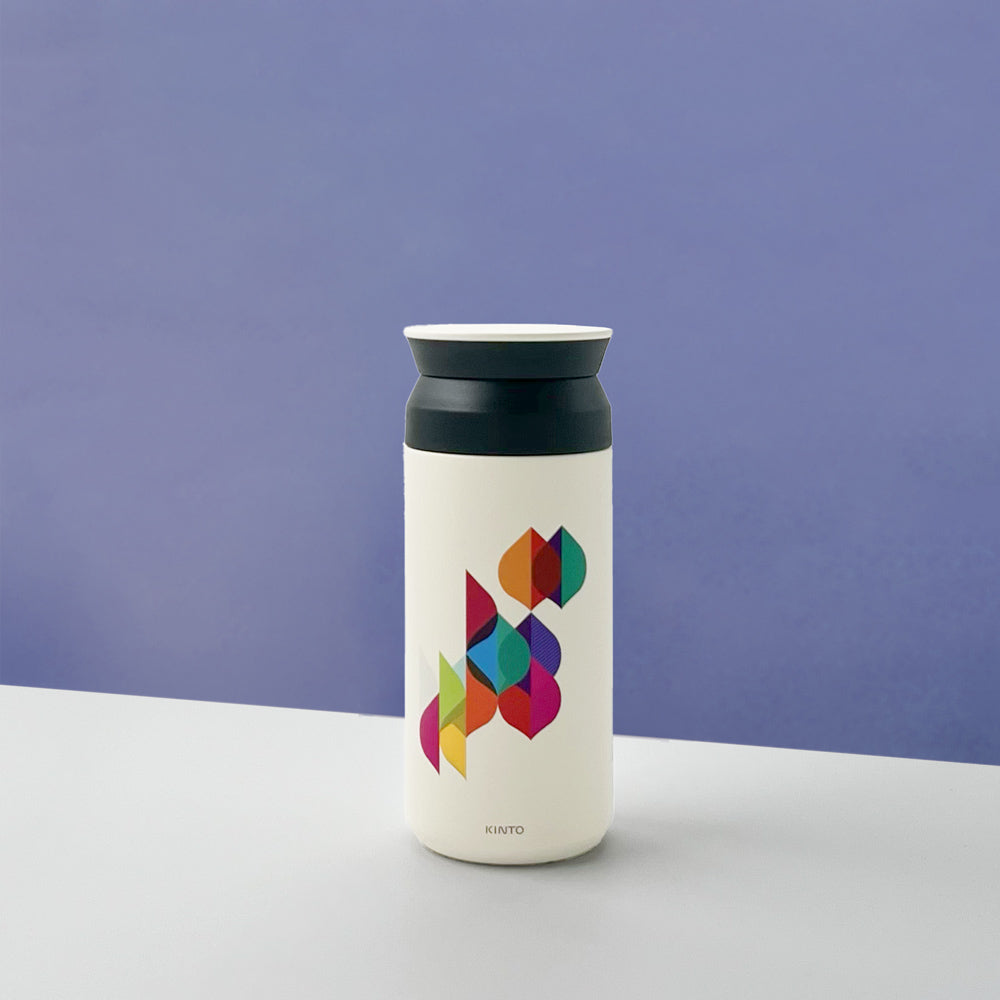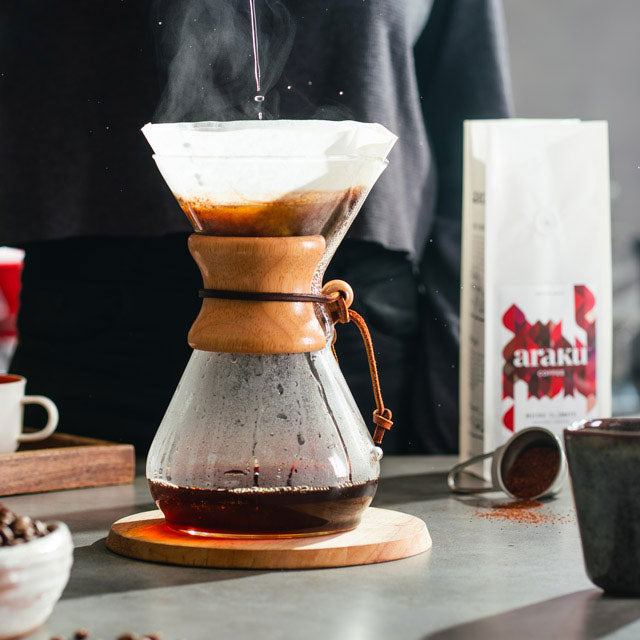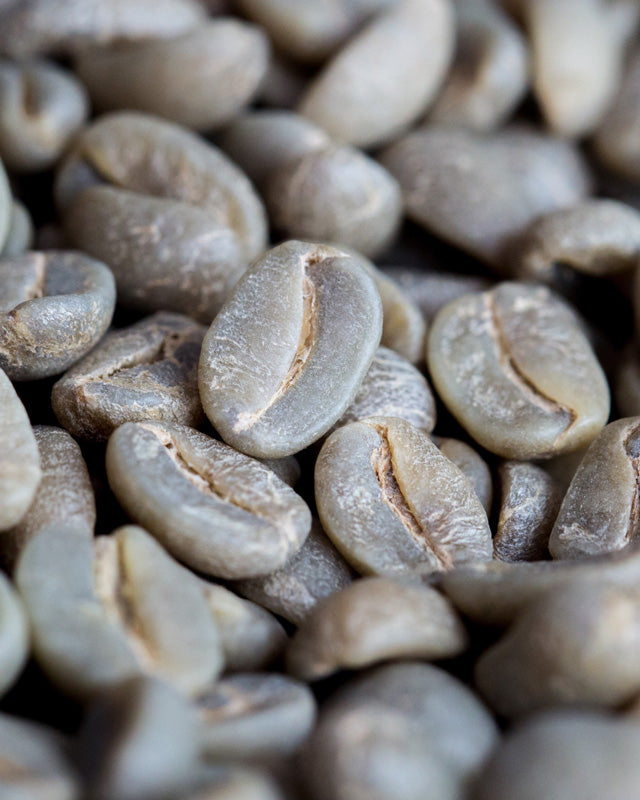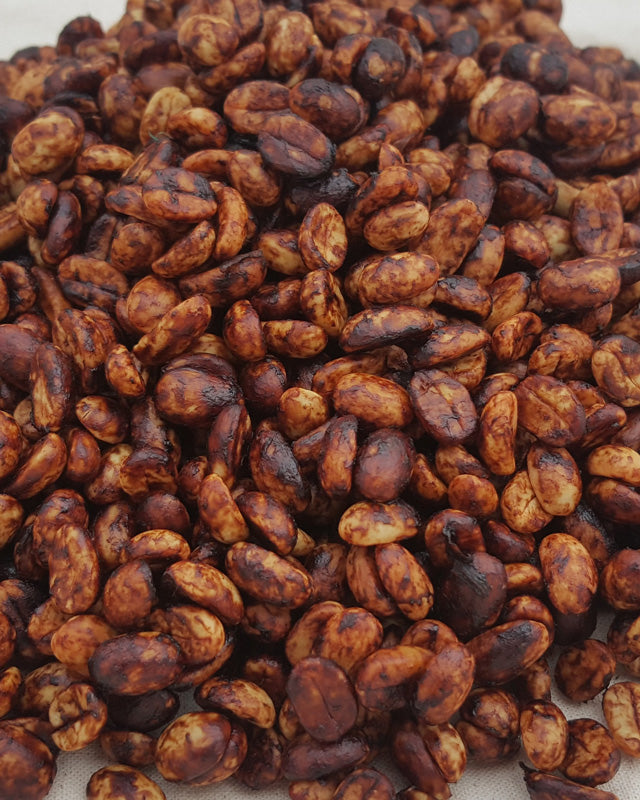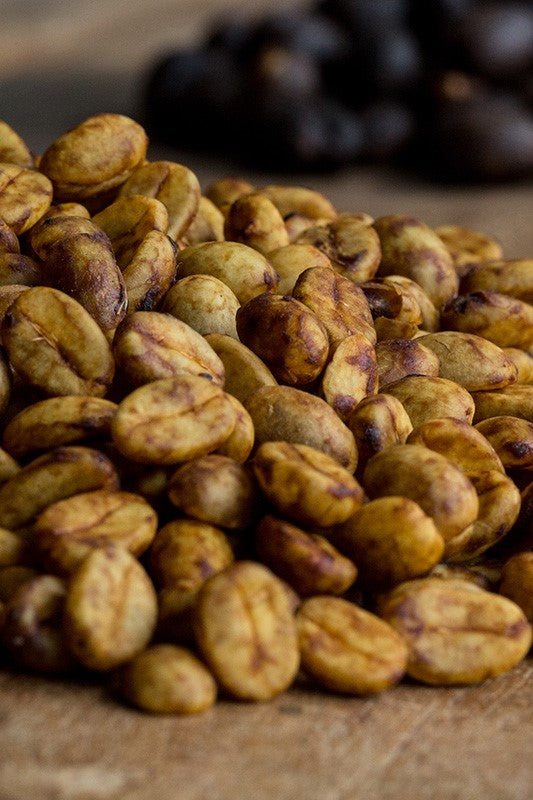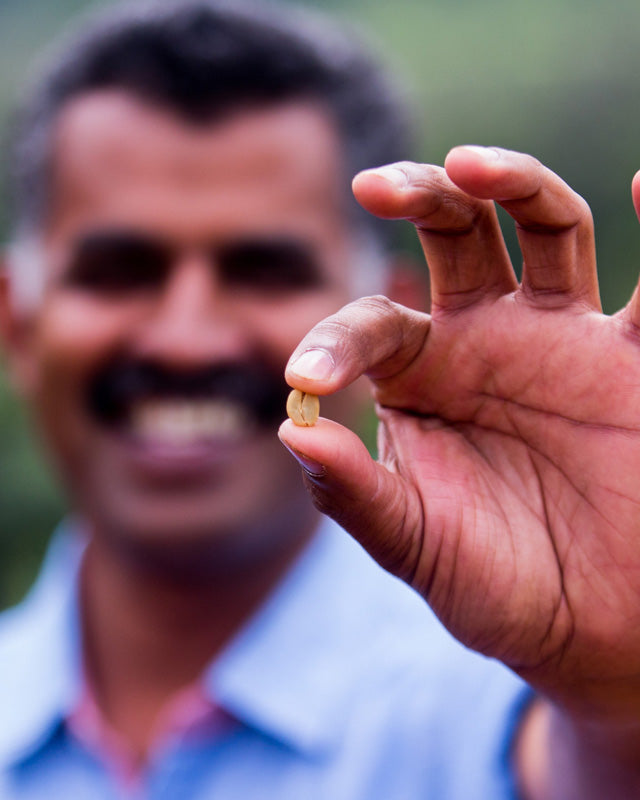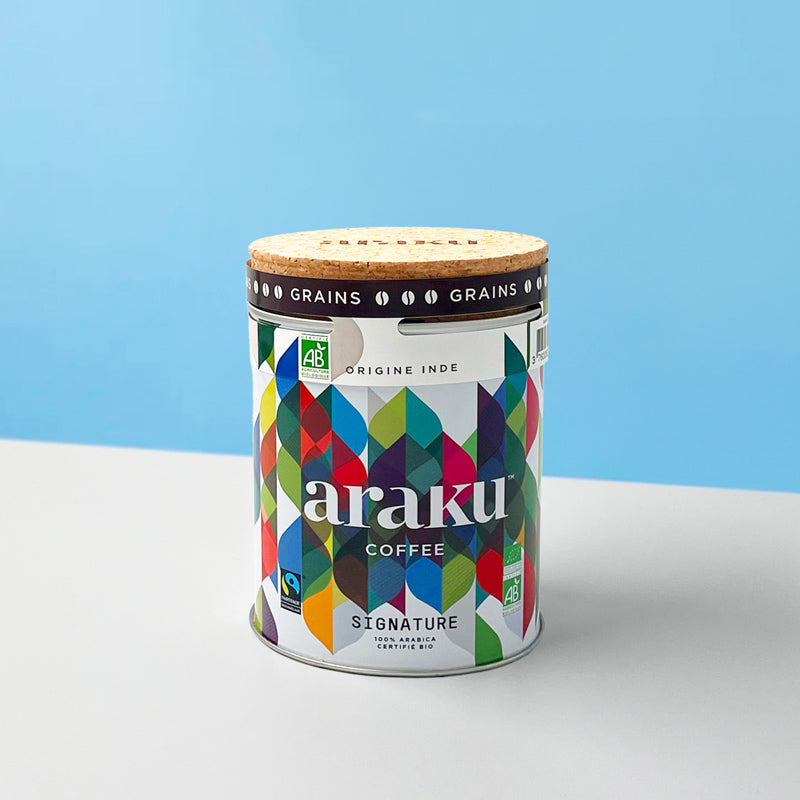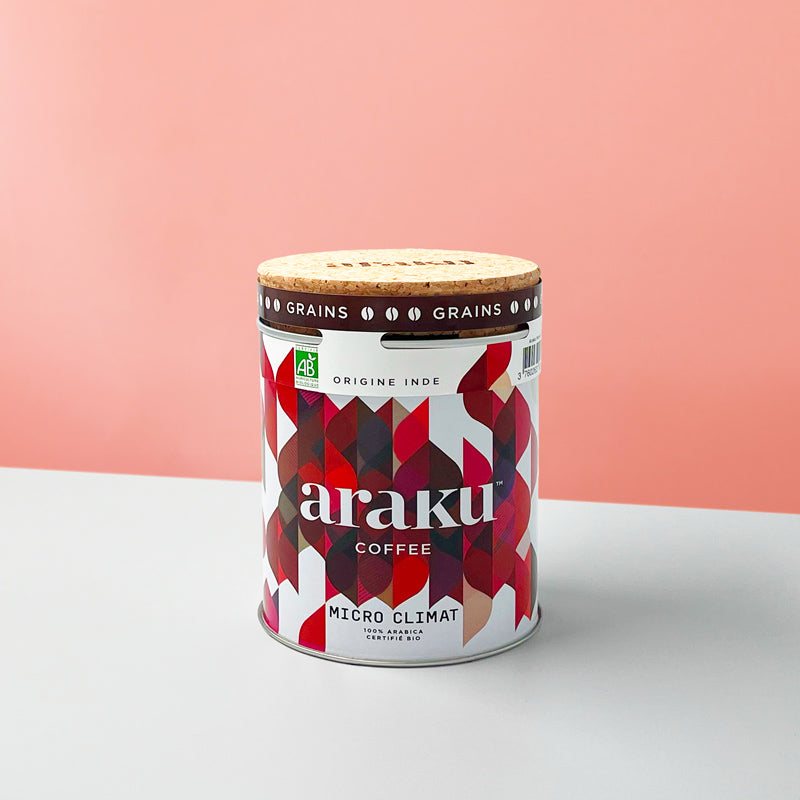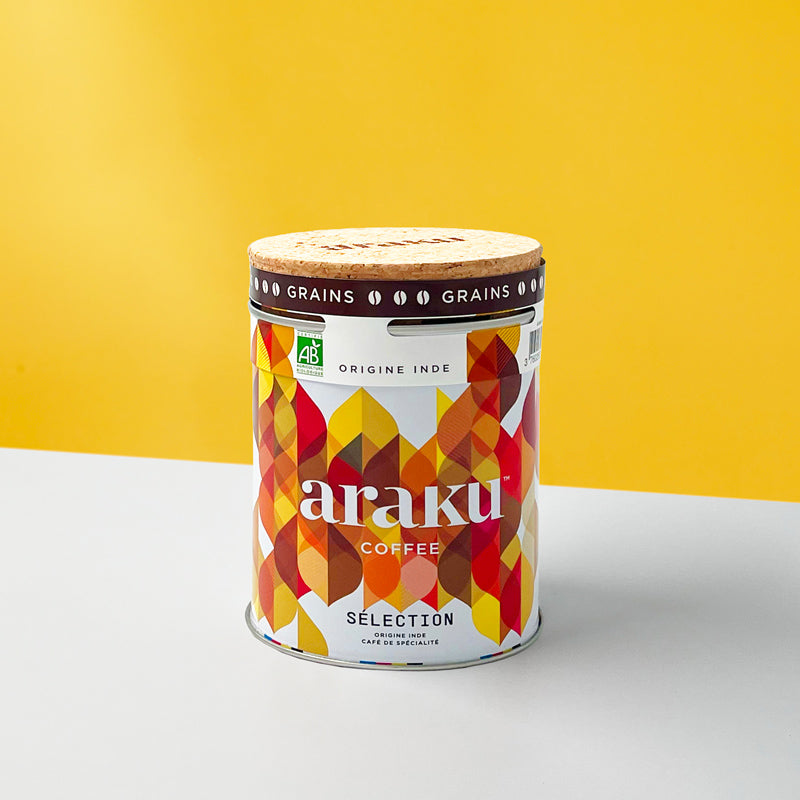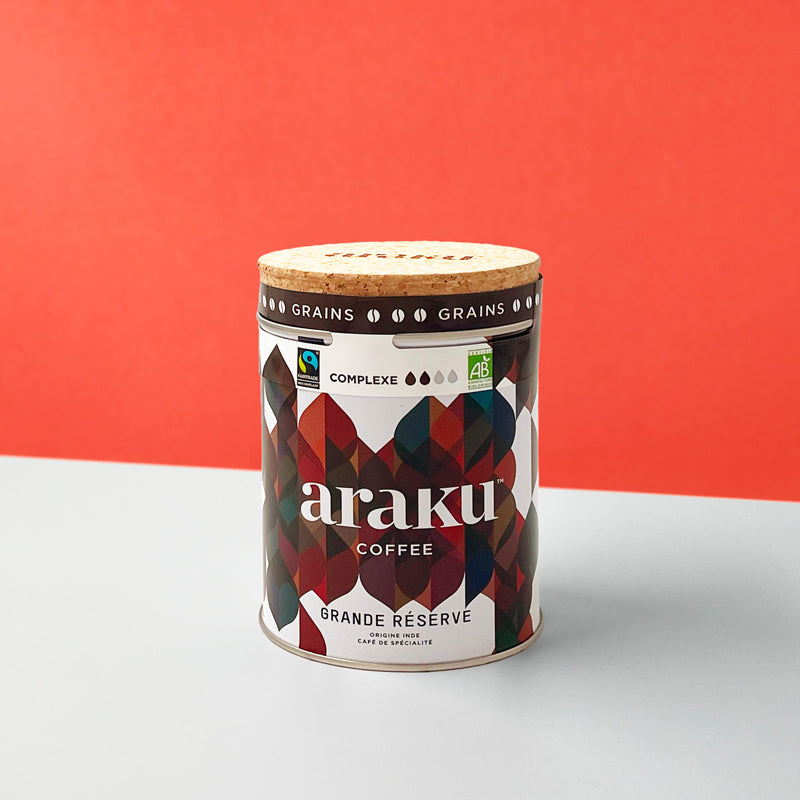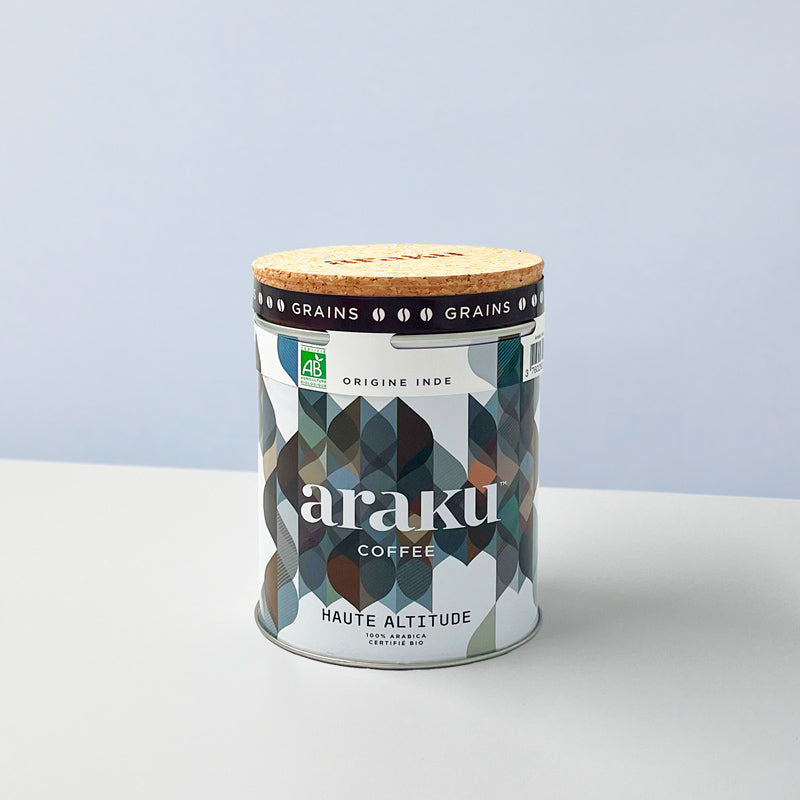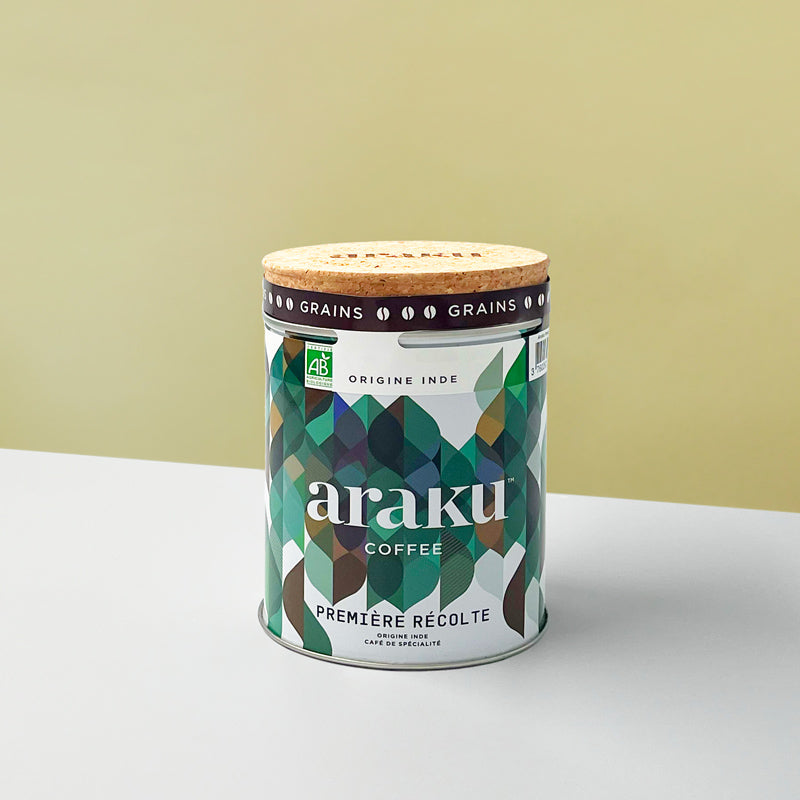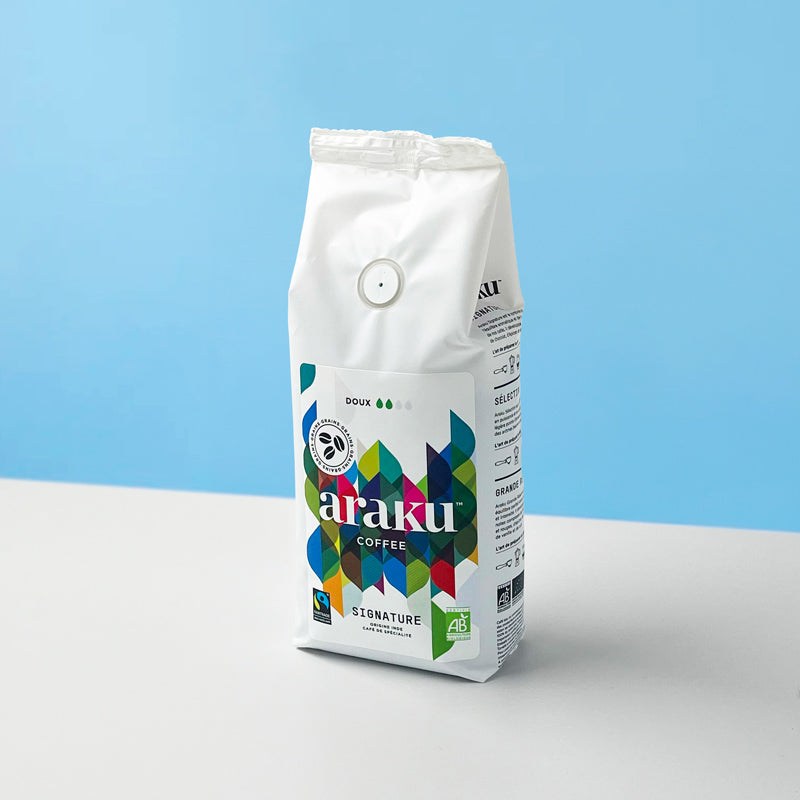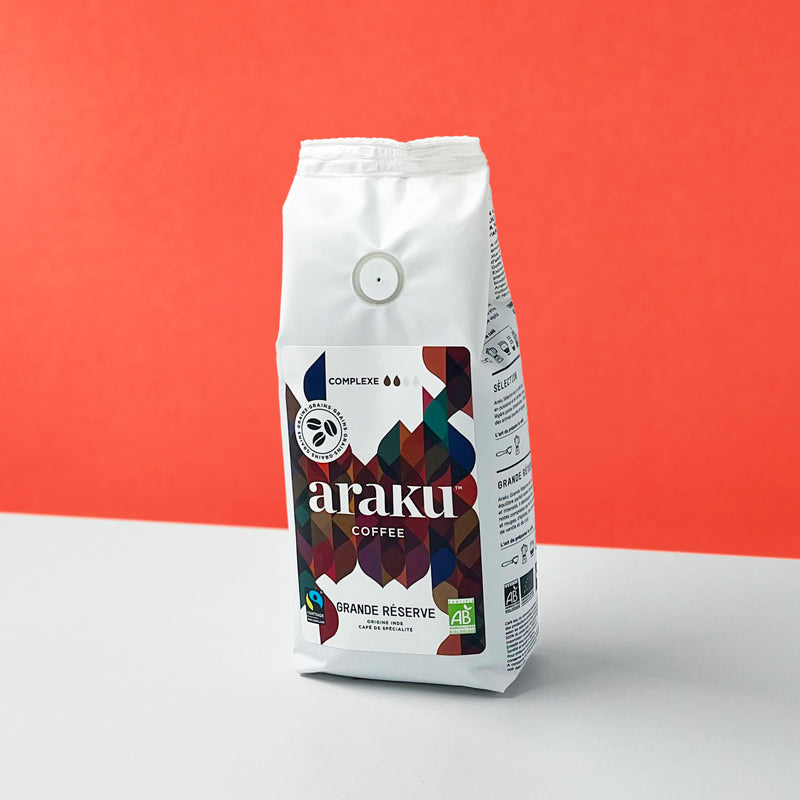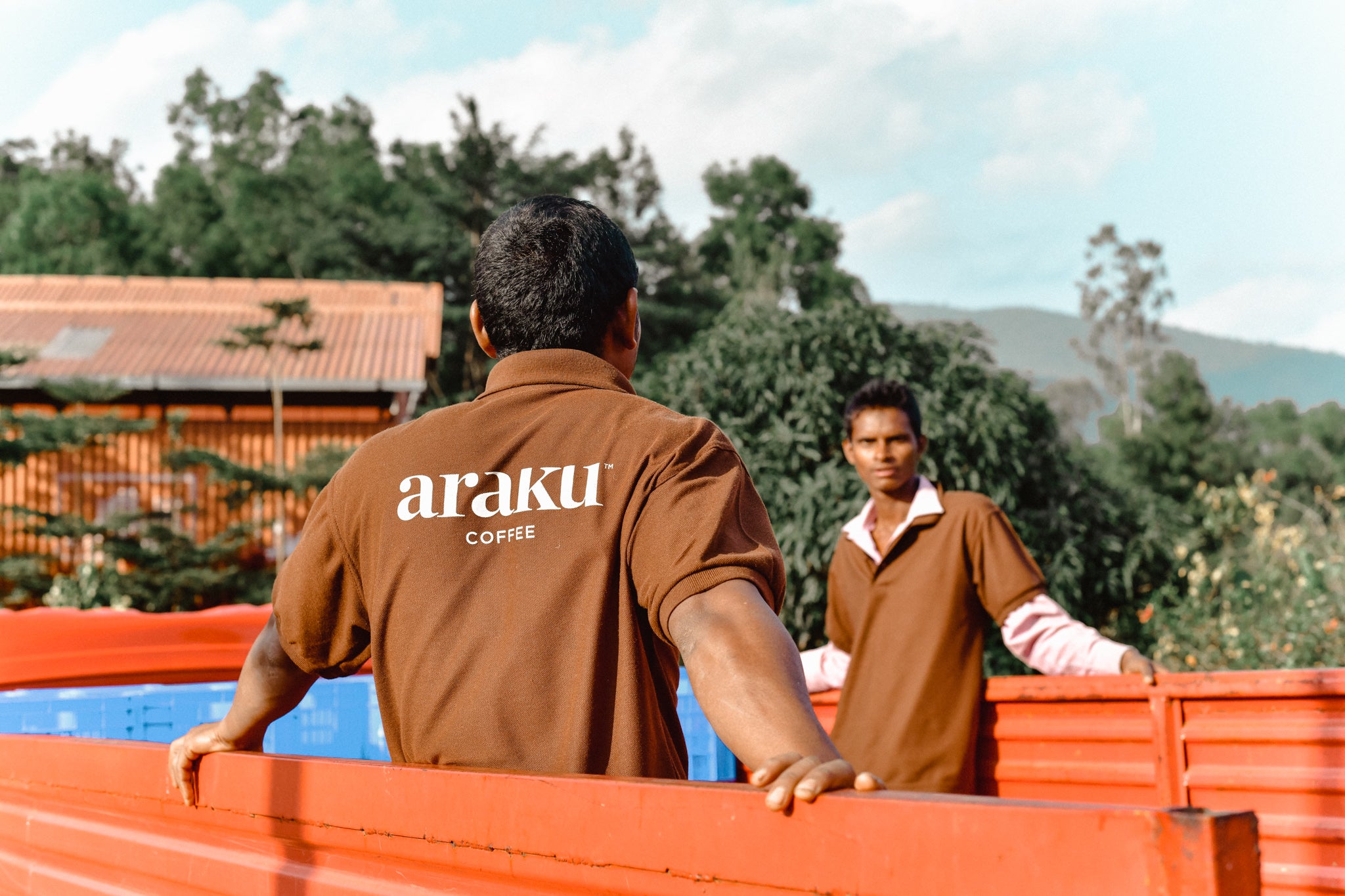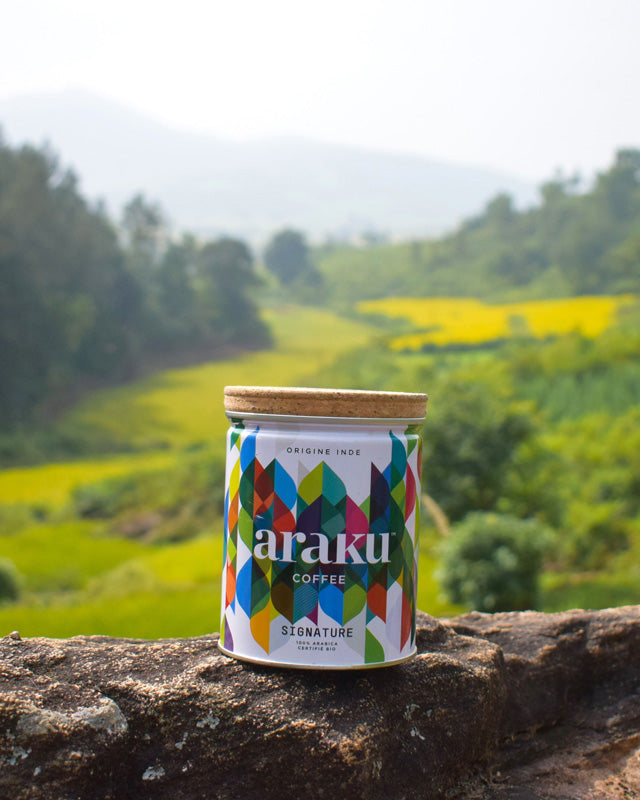
The journey of coffee, from seed to cup
Discover with us the many steps your coffee beans go through before becoming your delicious morning beverage. From harvest to roasting to fermentation, your coffee must go through various processes to develop its unique aromas. Join us as we explore the complete journey of a coffee bean, from its plantation to its transformation into a beverage.
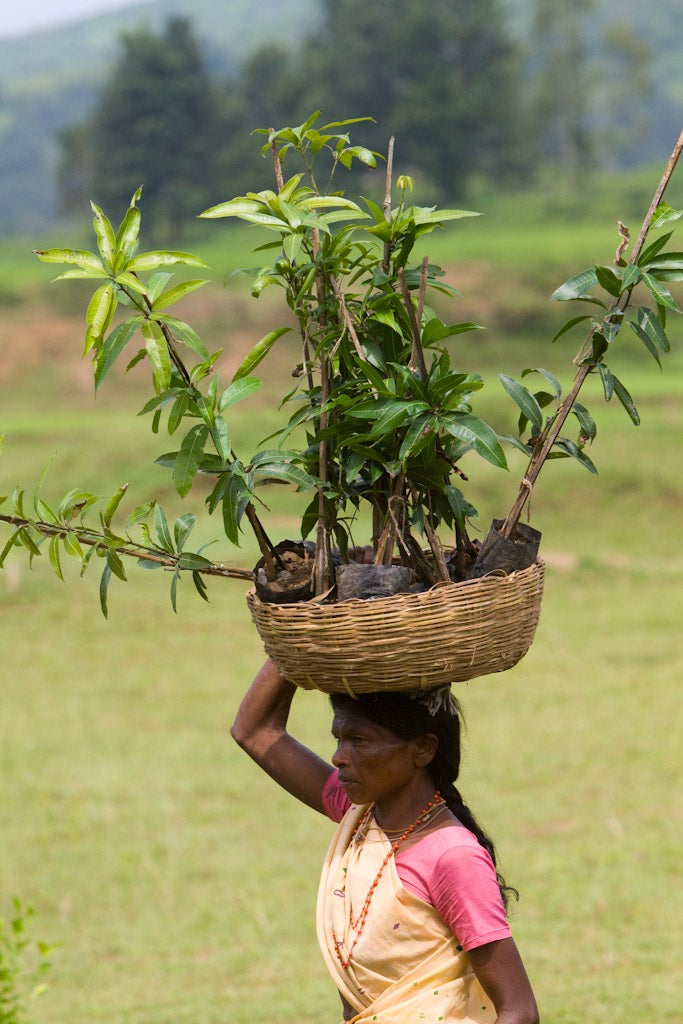
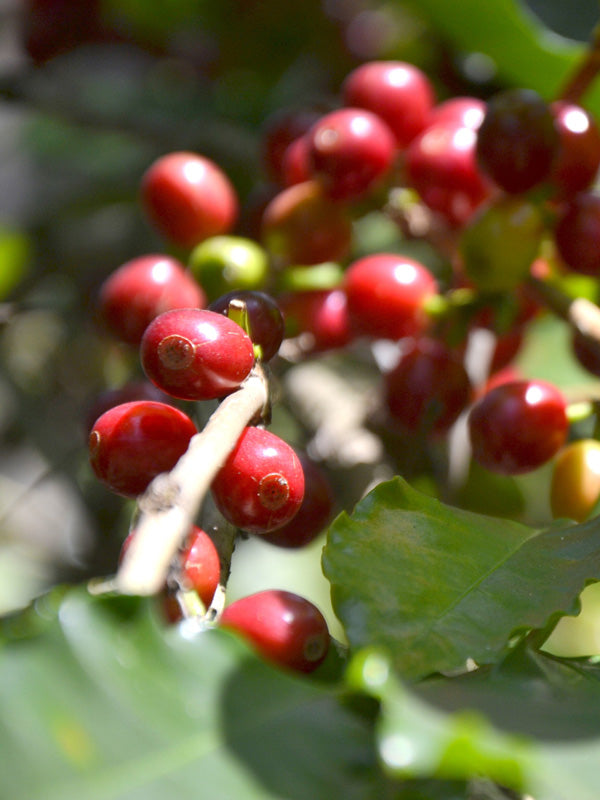
1. The species
When we talk about coffee species, we are mainly referring to Arabica and Robusta, which are the two most common varieties.
Robusta is distinguished by its bitter and strong taste, as well as its high caffeine content. On the other hand, Arabica is appreciated for its more harmonious taste and aromatic richness. It is also the most sought-after variety today.
All our Araku coffees are 100% Arabica.
The variety
When we talk about coffee varieties, we often talk about subspecies of Arabica, of which there are many. Each region of the world has its own varieties. Among the best known are, for example, Bourbon, Typica and Caturra. Some of them, such as Geisha, are distinguished by highly sought-after aromatic characteristics, including floral notes.
At Araku, we cultivate varieties endemic to India, mainly Arabica SL9, Cauvery, SL5 and SL795.
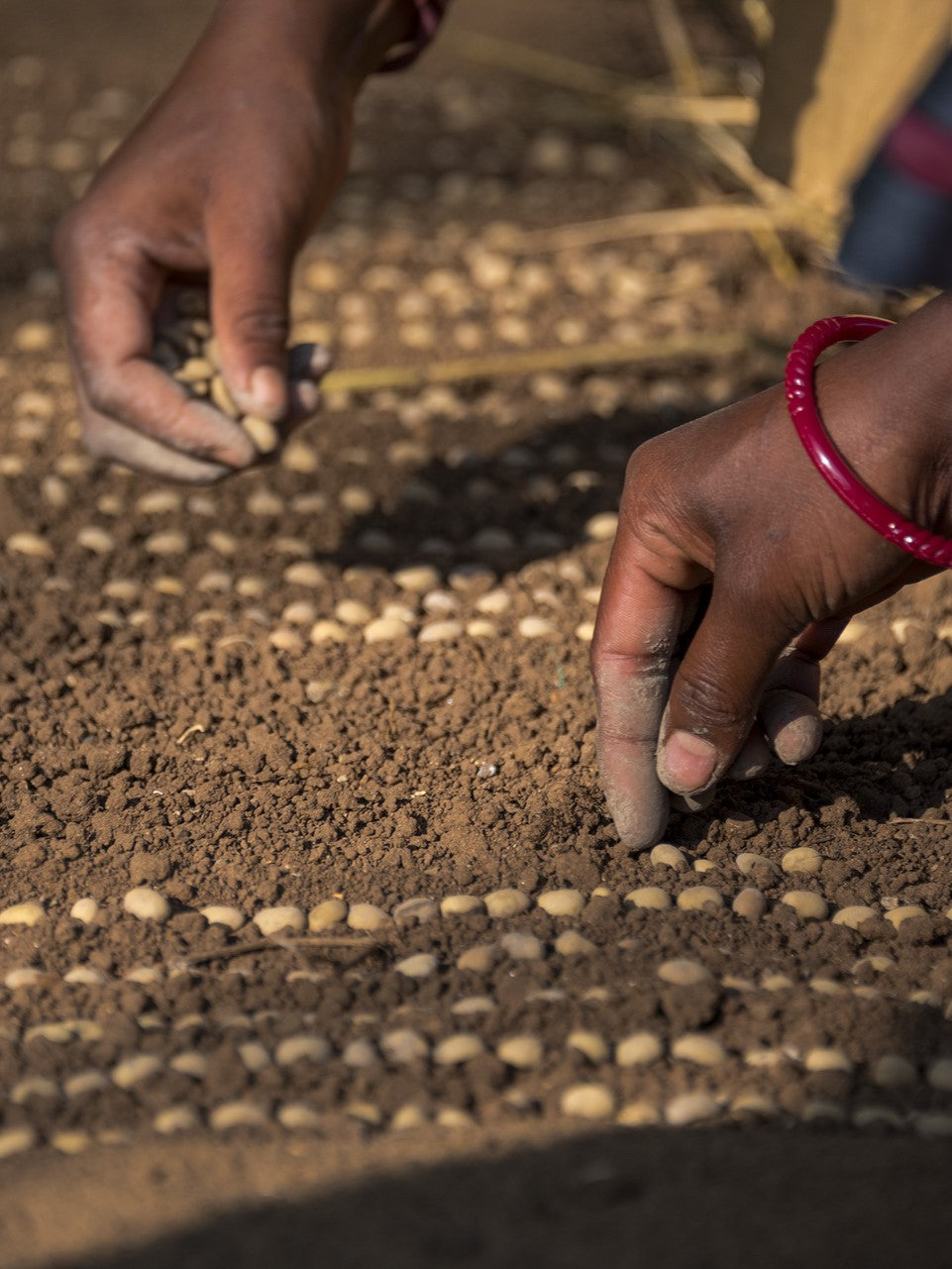
2. Planting
The seeds are usually sown in nurseries where they germinate for several months. Once the seedlings are sufficiently robust, they are transplanted to well-prepared plots of land, often shaded to protect them from direct sunlight. Coffees prefer rich, well-drained soil. After planting, regular maintenance is necessary, including watering, weeding and protection against diseases, to ensure optimum growth of the plants and a quality harvest.
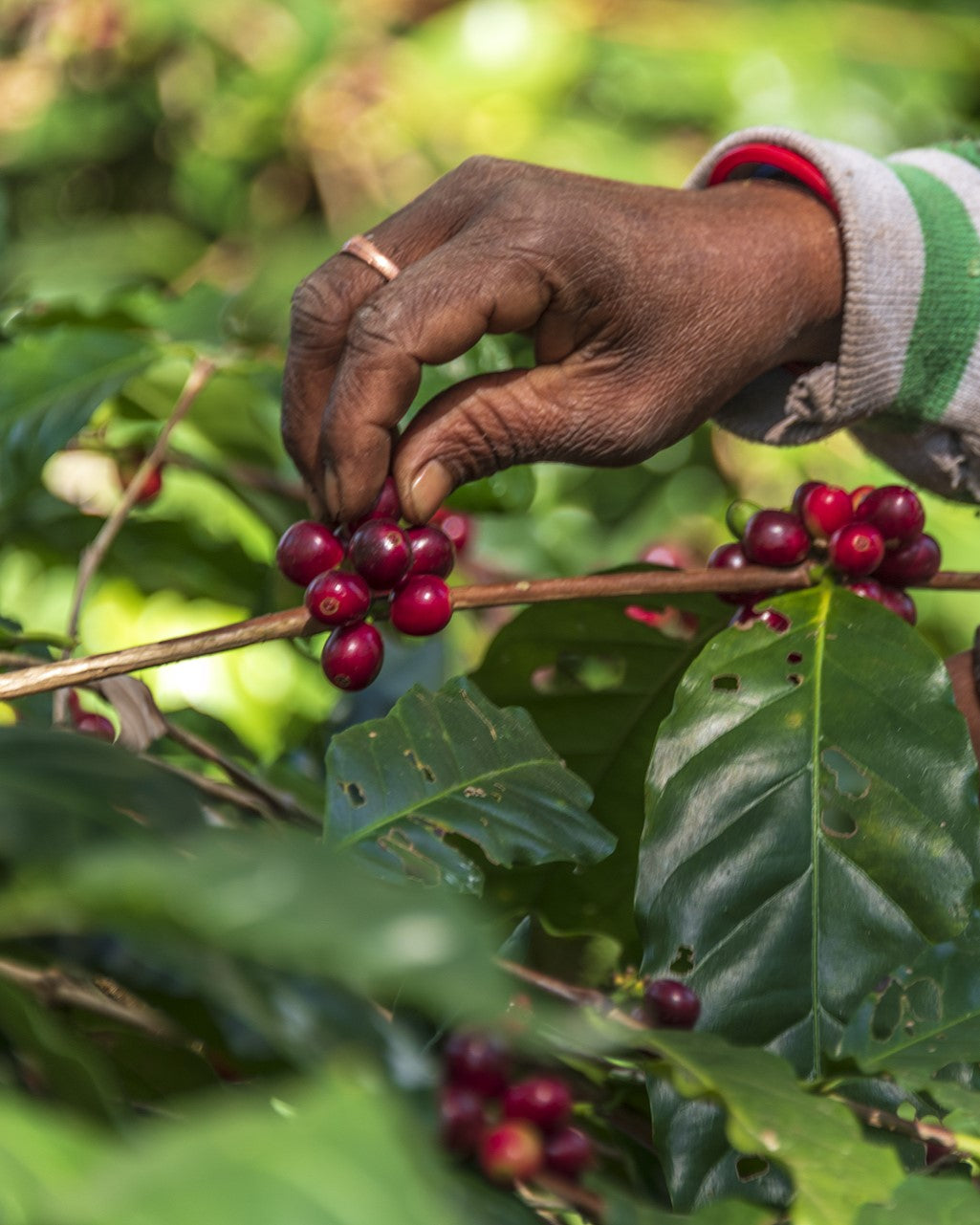
3. The harvest
The crucial element at this stage is to ensure that the coffee cherries are harvested only when they are sufficiently ripe and all at the same stage of ripening.
Although many projects aim to improve the consistency of mechanical harvesting, it still produces lower quality coffees, picked at different stages of maturity. To ensure the quality of our coffees at Araku, we have opted for 100% manual harvesting.
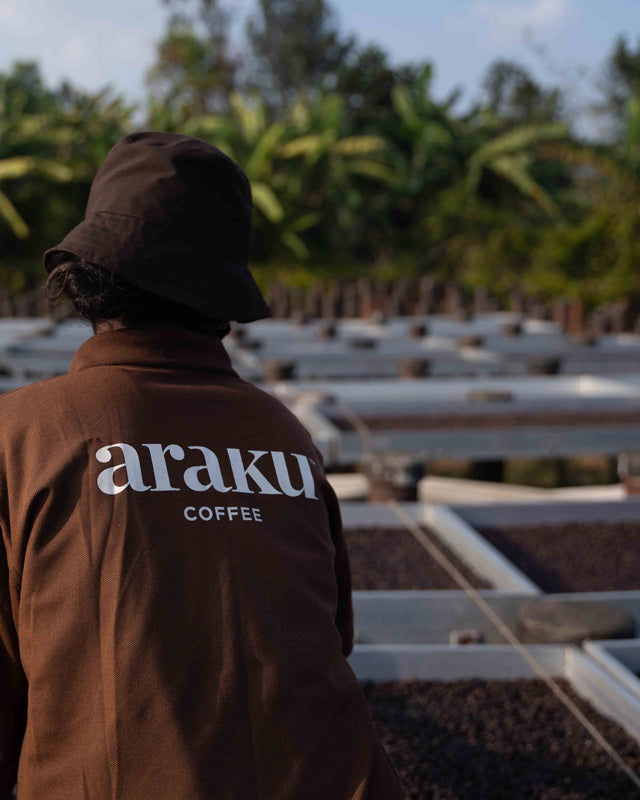
4. The “Red Truck” and the CPU
The Araku Valley, a vast rural area, requires a precise procurement plan to harvest coffee cherries from nearly 500 villages. These villages are classified into three categories: “Red Truck,” “Blue Truck,” and “Yellow Truck.” A “Red Truck” village produces at least 5,000 kg of the highest quality cherries, a status symbolizing prosperity and highly coveted. Villages go through “Yellow Truck” and then “Blue Truck” status before reaching this level.
Trucks transport the cherries to the CPU (Central Processing Unit) managed by Araku, where fermentation, drying, sorting and scoring take place. Each crate of coffee that arrives at the CPU is equipped with a QR code that allows traceability back to the producing family.
5. Fermentation processes
All coffees, without exception, undergo fermentation! It is through this process that coffee beans develop their aromas. However, each fermentation method is unique and significantly influences the taste of coffee. In this section, we will look at the main processes used today.
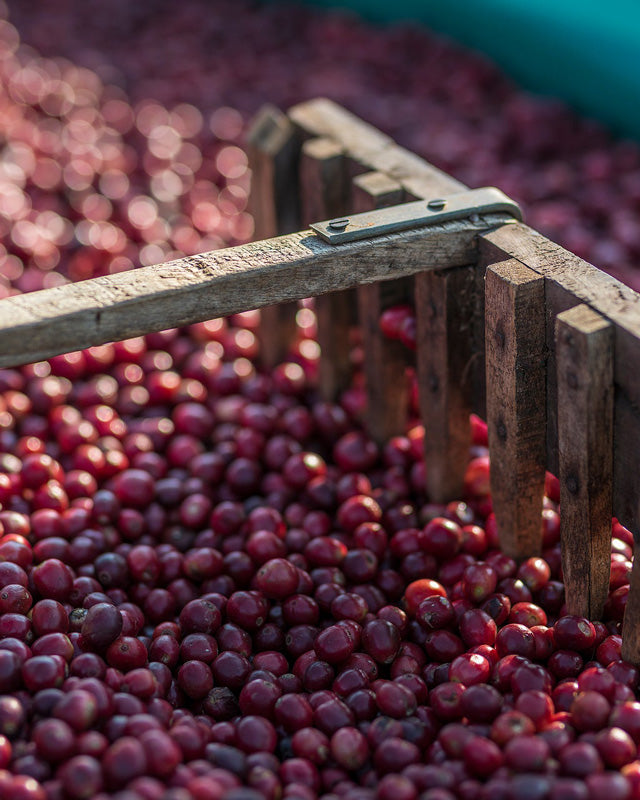
6. Drying
The drying of coffee beans depends on the fermentation process used and the climatic conditions of the region. The most common method is to spread the coffee cherries or beans out in the sun. However, the support on which the beans are placed can vary. The two main supports are directly on the ground and on raised beds. At Araku, our coffees are dried on raised beds, which allows for better air circulation and more even drying.
It is also possible to dry coffee beans mechanically using rotating drums. These drums allow the drying process to be accelerated and parameters such as temperature to be controlled. This method is often preferred in humid areas where sun drying is difficult and time-consuming. Mechanical drying ensures optimum control of conditions, reducing the risk of bean degradation while providing an effective alternative when climatic conditions do not allow for effective sun drying.
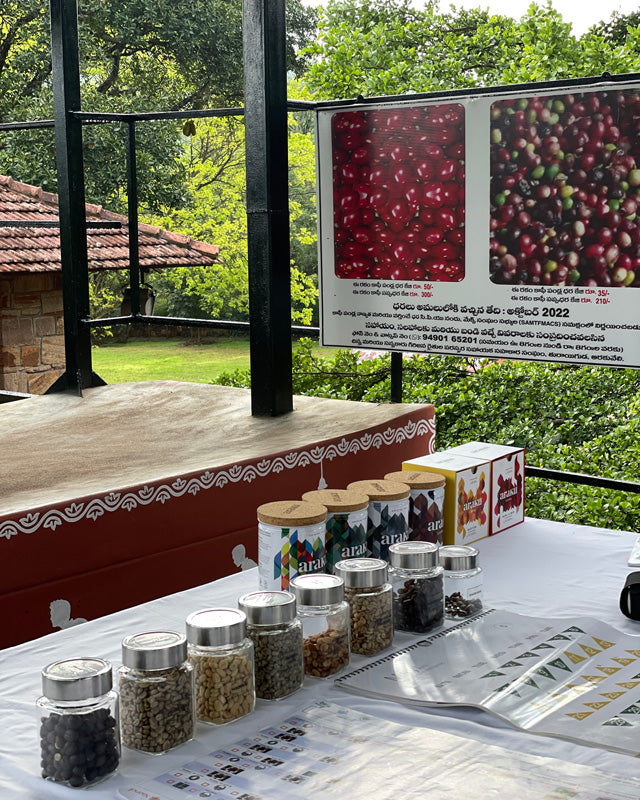
7. Sorting and scoring grains
Once the coffee beans are dried, they are sorted based on size and any defects. Then, a small amount of each coffee is roasted and evaluated by judges accredited by the Specialty Coffee Association (SCA). The coffees are tasted using the standardized “cupping” method. Cupping analyzes the aroma, flavor, acidity, body, and aftertaste of the coffee.
After cupping, each coffee is given a score from 0 to 100. To be considered a specialty coffee, it must score above 80. At Araku, all of our coffees are specialty coffees, with scores above 86, ensuring exceptional quality and a unique taste experience.
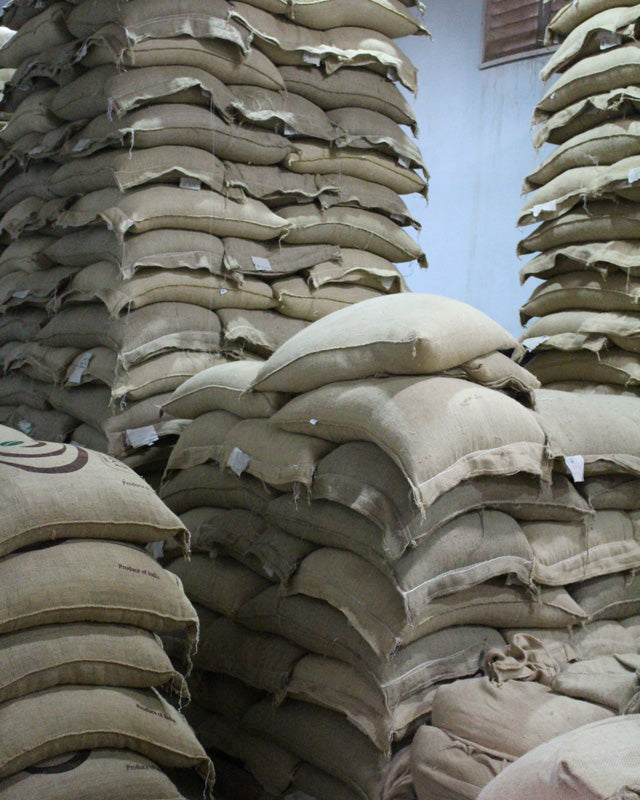
8. Export, transport, import
They are then ready to be sold to the world. In most cases, the coffees are sold to intermediaries, buyers of green coffee, who then resell them to roasters. At Araku, we promote direct trade with our producers , thus ensuring a more transparent and equitable relationship.
The traditional packaging method uses jute bags, which are still widely used today. However, these bags offer no protection against moisture, which can affect the quality of the beans during transport. Higher quality coffees, like ours, are vacuum-packed in plastic bags. This method ensures that the coffee beans
retain their freshness and exceptional characteristics until their final destination.
Araku coffees are transported from the CPU to the port of Cochin. After a month at sea they arrive in Antwerp in Belgium and are stored in a warehouse specializing in coffee near the port. They are then gradually transported to Paris.
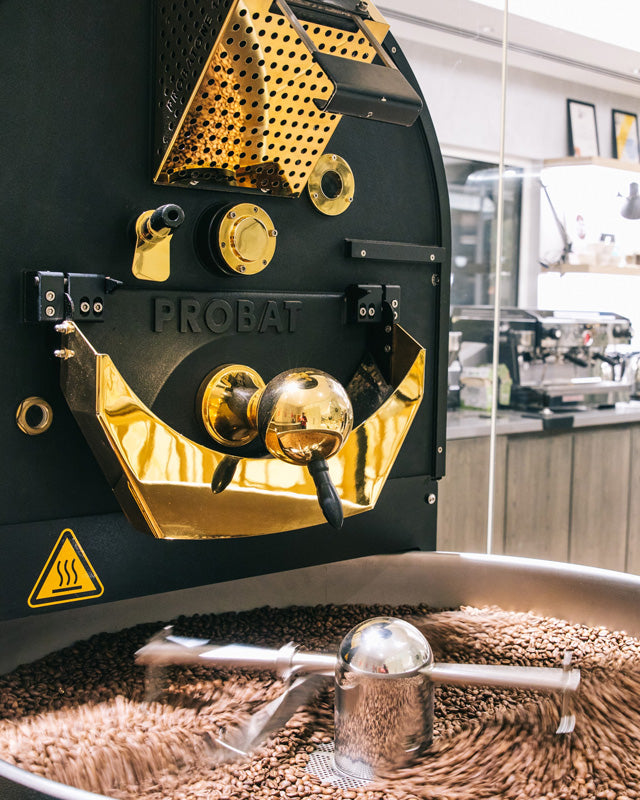
9. Roasting
Roasting is the process of cooking coffee beans to make them soluble and develop their aromas. Although green coffee has intrinsic characteristics linked to its terroir, it is only through successful roasting that these characteristics are fully revealed. The roaster, according to his preferences and expertise, will choose to highlight the aspects of the coffee that he wishes to emphasize.
Some roasters favor light roasts, which accentuate the vegetality, acidity, and aromatic complexity of coffees. These roasts allow for a wide range of subtle and nuanced flavors. Other roasters prefer darker roasts, which emphasize the sweetness, body, and caramel notes of the coffee, creating richer, more robust flavor profiles.
At Araku we offer light, medium and dark roasts to suit all tastes and extract the best characteristics of each of our coffees.
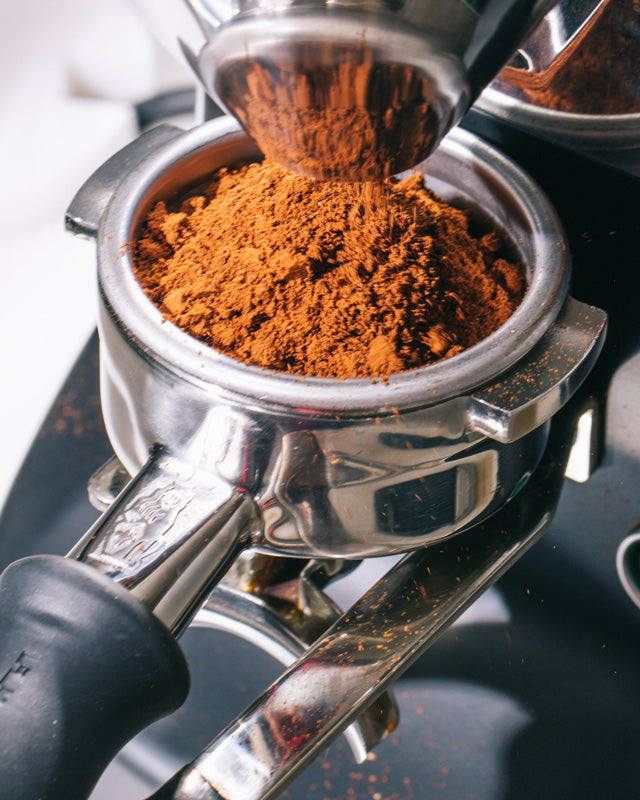
10. Grind the coffee
When grinding coffee, the goal is to achieve a uniform grind of the appropriate size. The grind size increases the exposed surface area of the coffee, which aids in extraction. For gentle methods that require long extraction times, coarser grinds are preferred to avoid over-extraction. Conversely, for preparations such as espresso or mocha, which produce concentrated beverages with short extraction times, fine grinds are chosen to ensure optimal extraction despite the reduced time. Each preparation method therefore requires a specific grind size.
A uniform grind means that all the “ends” of ground coffee are the same size. However, achieving great uniformity is a challenge, which mainly depends on the quality of the grinder and the burrs. Uniformity is at the center of concerns and innovations among professionals in the sector today.
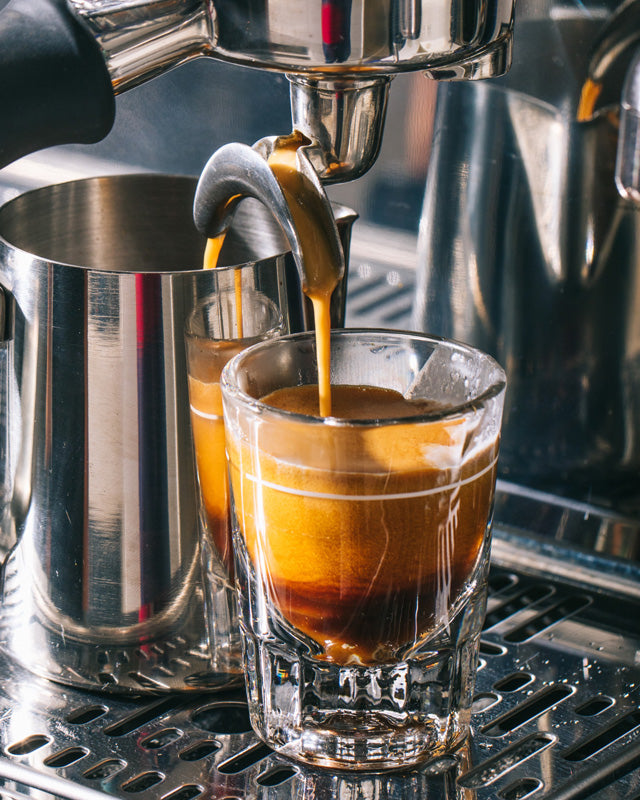
11. Extraction
Once you have selected the appropriate grind size, it is time to move on to the extraction. Many parameters come into play at this stage, some of which are more or less influenced by the chosen brewing method. These parameters include grind size, as mentioned above, but also contact time, temperature, pressure, water quality, barista experience, and many more.
It would take too long to detail the optimal settings for each method, as they vary considerably from one preparation method to another. However, we have prepared specific guides for each method to best guide you in preparing your coffee.
Our Specialty Coffees
FAQs
Araku offers organic specialty coffees grown according to the principles of biodynamic agriculture. The plantations are operated by a cooperative of independent farmers, who practice entirely manual cultivation, without the use of machines or pesticides. Thus, thanks to small-scale production, these coffees benefit from Fairtrade certification, guaranteeing operators remuneration 15% to 65% higher than that of conventional producers.
Our coffee comes from the eponymous region of Araku, located in the state of Andhra Pradesh in southeast India. Located at more than 1000 meters above sea level and surrounded by green hills, the Araku highlands offer climatic and geographical conditions particularly conducive to the cultivation of specialty coffee.
Yes ! All Araku Coffee coffees are 100% Arabica, S9 and S5 varieties. They are all grown according to the principles of regenerative agriculture and are all recognized as specialty coffees.
Our Organic Coffee Ranges
Exceptional Coffees
ARAKU exceptional coffees embody excellence, they are distinguished by incomparable quality and remarkable sensory characteristics.
Specialty Coffees
Specialty coffees typically score above 80 out of 100, and ARAKU coffee consistently scores above 90.
Pure Arabica coffees
ARAKU specialty coffees are made exclusively from beans of the Arabica variety, recognized as the most popular and appreciated worldwide.
Fair Trade Coffees
ARAKU specialty coffees are fair trade and follow ethical trading standards that ensure fair and dignified working conditions for producers.
Indian Cafes
ARAKU Indian coffees come from a valley in India. India boasts a thriving specialty coffee culture that makes it one of the best in the world.
Grand Cru Coffees
Grand Cru coffees are exceptional coffees. They are carefully selected from specific regions, renowned for their specialty coffee culture.
Organic Coffees
Organic coffees are grown using agricultural practices that preserve the environment and exclude the use of pesticides and chemical fertilizers.
Home Compost capsules
Nespresso Araku compatible biodegradable capsules are made only from organic materials. Which makes them fully compostable.


